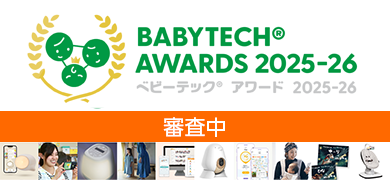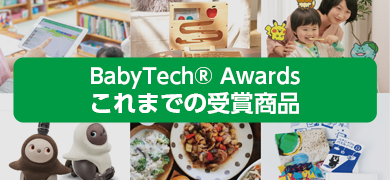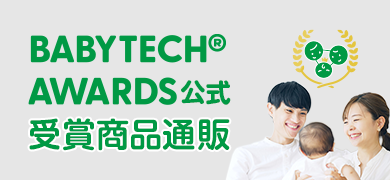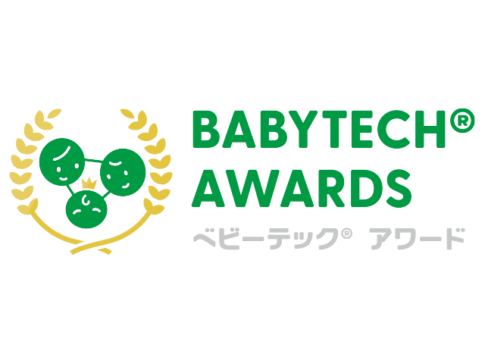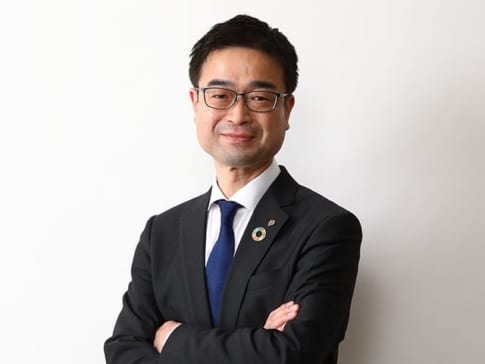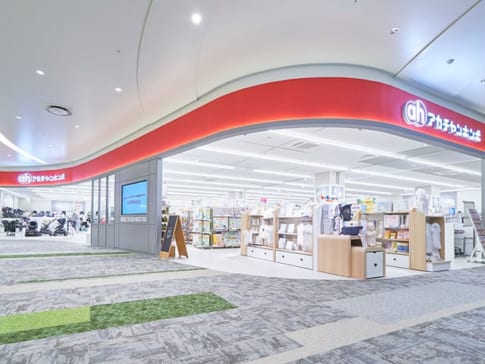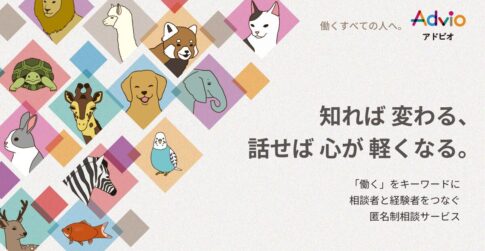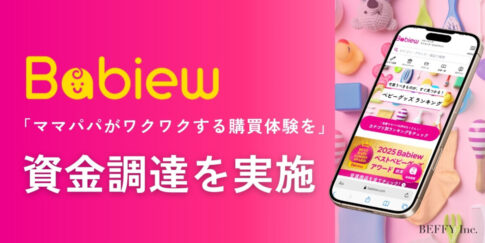- Monitoring children while they sleep to prevent Sudden Infant Death Syndrome (SIDS)
- The apps used to operate and check data on the tablet devices are regularly updated, improving usability on a daily basis.
- Already installed in over 300 daycare centers nationwide, watching over 3,000 children for their naps
(We spoke to...)
Unifa Corporation
Mr. Shin Imamura, Marketing Section
Ms. Miho Kobayashi, Public Relations
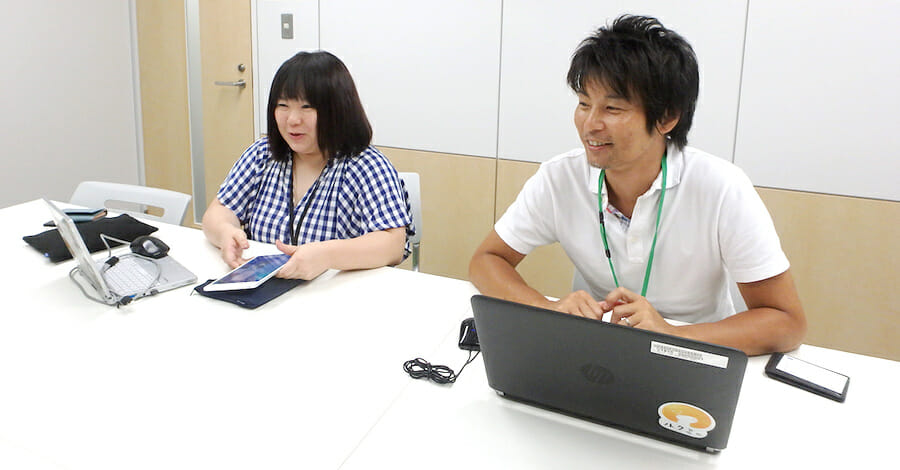 From left to right: Mr. Kobayashi, Mr. Imamura (titles omitted)
From left to right: Mr. Kobayashi, Mr. Imamura (titles omitted)
To further improve the quality of childcare while protecting the lives of children
Editorial:Thank you very much for your time today. I understand that "Lucumi Noon Sleep Check" is a sensor that monitors the condition of children while they are sleeping and alerts us if there are any abnormalities... Could you tell us how you developed this product?
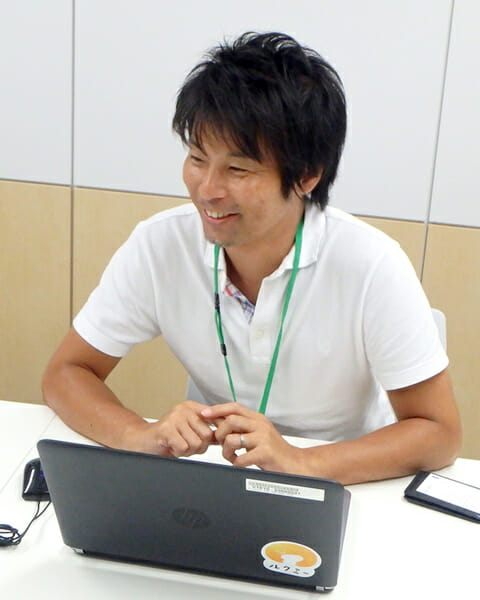
Imamura: In Japan, about 100 cases of SIDS (Sudden Infant Death Syndrome), or deaths of children during sleep, occur annually, and one of our objectives in developing this product was to prevent such cases. One of our objectives in developing this product was to prevent such cases. The development of this product began with the idea of having nursery school nurses, who are professionals in childcare, use the product to enhance their knowledge and experience.
Another purpose of the development was to lighten the workload of nursery school nurses, especially those in charge of children aged 0 to 1, during "nap time. For example, they are required to check and record the direction of the sleeping child's body every five minutes, and if the child is in a "prone sleeping" state, which poses a high risk of SIDS, they are required to turn the child onto his/her back. Another motivation for the development of this product was to improve the quality of childcare by streamlining these monitoring and recording tasks and thereby reducing the mental burden on childcare workers.
Thorough pursuit of "ease of understanding" and "ease of use" in the field of childcare
Editorial:That is a wonderful initiative. Now, could you show us the actual product?
Imamura:This is the button-type sensor. You may have imagined it to be much larger from the pictures on the website, but it is only about 4 cm in size. It is designed in a size that will not pass through the accidental ingestion checker to prevent children from accidentally swallowing it.

Imamura:Remove the light blue frame and attach it to the children's clothes so that they are tucked in. As you can see if you try it, it will not come off, no matter how much the children turn over.
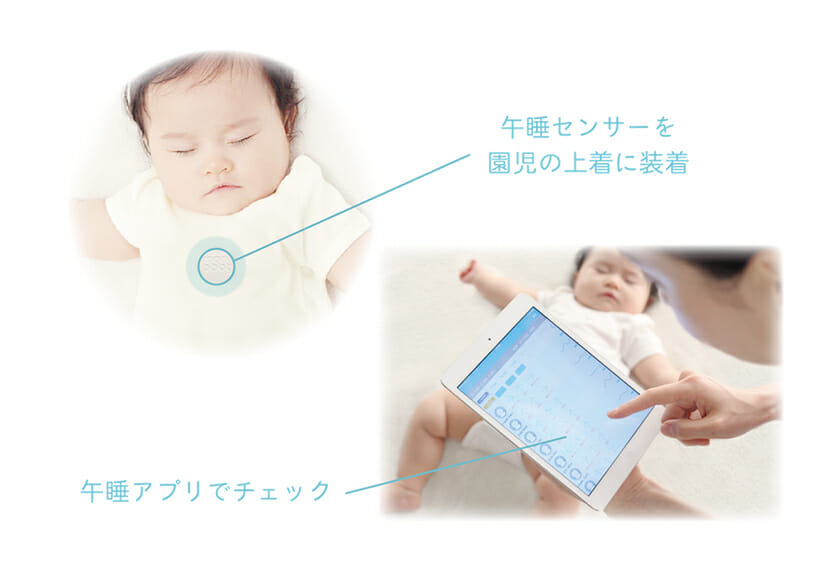
Editorial:True. It is fixed quite firmly.
Imamura:This sensor detects the children's body condition (face up, face down, face right, face left) and automatically keeps a record on the tablet device's application at 5-minute intervals (check intervals can be changed by setting). Currently, in many daycare centers, nursery staff keep this record by hand on a check sheet.

Imamura: Using Lucumi Noon Sleep Check first reduces the burden of recording for childcare workers. In addition, the system alerts you when it detects the child's body movements have stopped or when the child is lying on his/her face down. The concept of the system is to prevent accidents during naps by double-checking with both the eyes of the childcare workers and the eyes of IT.

Editorial:So the tablet device displays the orientation of the body in real time. The alarm is also notified with an alarm sound and image, so there seems to be no need to worry about missing it.
Imamura:The alert for prone sleeping is automatically stopped when the childcare worker goes to the children and returns them to sleeping on their backs. In this way, the specifications are designed so that the noontime sleep check sensor and the childcare worker can work together to respond to the situation.
Editorial:What is the age at which it is primarily used?
Imamura:The system is intended for children from 0 to 2 years of age, but currently, the overwhelming majority of nursery schools are introducing the system in the 0-year-old class. The recorded data can be printed out and submitted for audit records.
Editorial:This product has been designated as a Class 1 medical device.
Kobayashi:The material requirements were especially strict because of the contact with children's skin.
Rapid dissemination of the product is felt to be highly appreciated in the field of childcare.
Editorial:What is the status of product dissemination?
Imamura:Until now, mat-type products have been the most common solution for checking nocturnal sleep, but since the release of the button-type sensor-type Lucumi Noon Sleep Check, we have received a great number of inquiries and inquiries. As of August 2018, the product is being used in 300 nursery schools nationwide, with approximately 3,000 sensors monitoring children's naps.
Editorial:What has been the response from nurseries that have actually used the system?
Imamura:The "prone sleeping detection" and "automatic recording of body orientation" are especially appreciated. Even if the childcare worker in charge changes during nap time, the system can continue to check for "prone sleeping" and record it in the same way without error, which is a very welcome feature.
Some day-care centers that use this system explain at parent-teacher conferences that they also use this system to protect the safety of children during nap time, which seems to help reassure parents.
Editorial:It would be a good way to differentiate daycare centers in the future.
Imamura:Yes, I think so. I think the current issue in the childcare industry is the recruitment of childcare workers and preventing them from leaving the workforce. Therefore, those who operate daycare centers are considering using such a system to improve the efficiency of their operations and lower the mental burden of their employees, thereby helping them to recruit and prevent turnover.
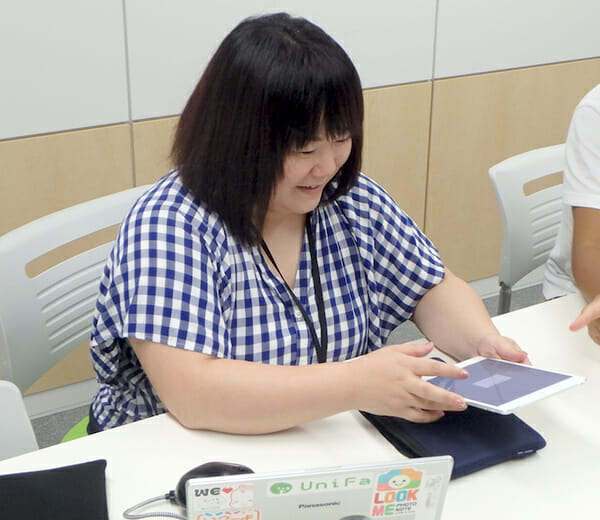
Kobayashi:In fact, some of the day-care centers that have introduced the Lucumi Noon Sleep Check have a very high retention rate of day-care workers. The nursery schools advertise on their websites that they use the product, and they also post a link to our company.
What is the best way to introduce IT equipment into childcare settings?
Editorial:What is the actual process of introducing this product?
Imamura:Based on the concept of "ready-to-use right out of the box," our customer center provides support from the shipping stage. The tablet device contains a communication sim card just like a cell phone, so there is no need to set up an Internet connection via Wi-Fi. Not only is the monitoring application already installed on the tablet device, but the names of the children are set on the input screen of the application according to the nursery school where the system will be installed. The name stickers of the children are also attached to the sensors.
Even after the product's release, we continue to value customer feedback and make repeated minor improvements. For example, in response to requests from childcare professionals, we changed the text input method for the monitoring application to "Japanese input" instead of "Roman input," and added a memo field that can be freely filled in. We have also improved the design of the arrows indicating the direction of the sleeping child's body with each new version of the application based on feedback. This is possible only because the app is developed in-house.
Editorial:It is becoming more and more user-friendly, and the nursery is very grateful for this.
Imamura:We have many different types of childcare workers, some familiar with IT equipment and some not so familiar, so we are trying to make the system usable even by those who are not familiar with it. If not, it would not be widely used.
Editorial:What are the implementation costs?
Imamura:The sensors are sold for 30,000 yen each. We then charge a monthly fee linked to the number of preschoolers using the sensor.
Toward the realization of the "Smart Nursery School Concept
Kobayashi:In fact, once a year, our president, engineers, sales staff, and other employees receive hands-on training at a daycare center. There, they observe various operations up close and personal, and listen to the opinions of the on-site nursery staff.
Editorial:That seems to be a hint for new development. What kind of development do you have in mind for the future?
Imamura:As for the Lucumi series, we plan to launch the Lucumi Thermometer by the end of 2018. This product records body temperature data on a tablet in about 5 seconds when placed on the forehead. In addition, we would like to launch the next product in the Lucumi series. This is because there is a need to communicate the various data that can be taken with our products to parents as well.
Kobayashi:Our company calls this the "Smart Daycare Center Concept. This concept aims to reduce the burden of childcare work and improve the quality of childcare by connecting various of our company's services, bringing families and daycare centers closer together. We are developing Lukumi Noon Sleep Check, Lukumi Thermometer, and other products, apps, and services in line with this concept.
Imamura:Also, since 90% of SIDS occur at home, we must market the Lucumi Noon Sleep Check to the general public to prevent SIDS. As part of our mission, we would like to expand the program to the home in the future.
<After the interview
Until I saw the actual product, I had no idea what it would be like. However, after hearing about the actual use of the product and the concerns of the childcare field, I realized that this was indeed a much-needed product. Although there are similar products from overseas, the manuals are in English and there are concerns about reliability, so we hope that this product will soon become widely available to ordinary households.
We were also impressed by the company's in-house engineering department, which is capable of developing applications, as well as its efforts to learn about the real voices of the field through hands-on training at daycare centers. I am sure that the company will continue to release wonderful products in the future.
Finally, here are some comments received in interviews with nursery school nurses who actually use this product.
- I was worried about installing the machine on my child, but when I saw the actual machine, I knew it would work.
- Easier to use than I expected.
- I was worried because I'm not very good with machines, but I was relieved that I could use it myself.
- Parents also told me that they feel safer with these products.
- Double peace of mind because the child's condition is checked by human eyes and a machine.
- It would be helpful to have an audible alarm to alert me to any abnormalities, as I tend to take my eyes off my child for a moment when I'm writing a contact sheet, etc.
- It just saves me the trouble of keeping track, and I can pay more attention to my kids.
We expect to see more and more domestic baby tech products from various manufacturers in the future. We are looking forward to it!
babytech.jp is accepting interview requests from manufacturers.Please contact us using the form.

